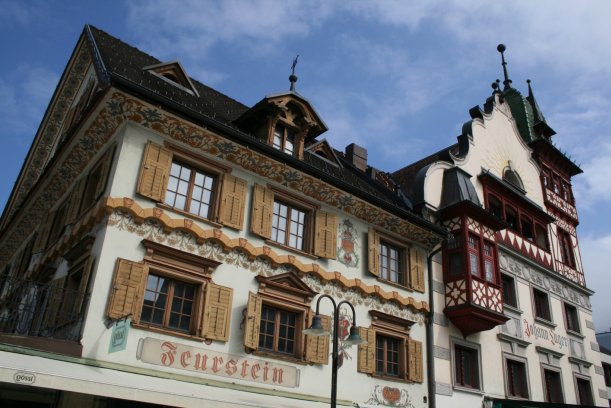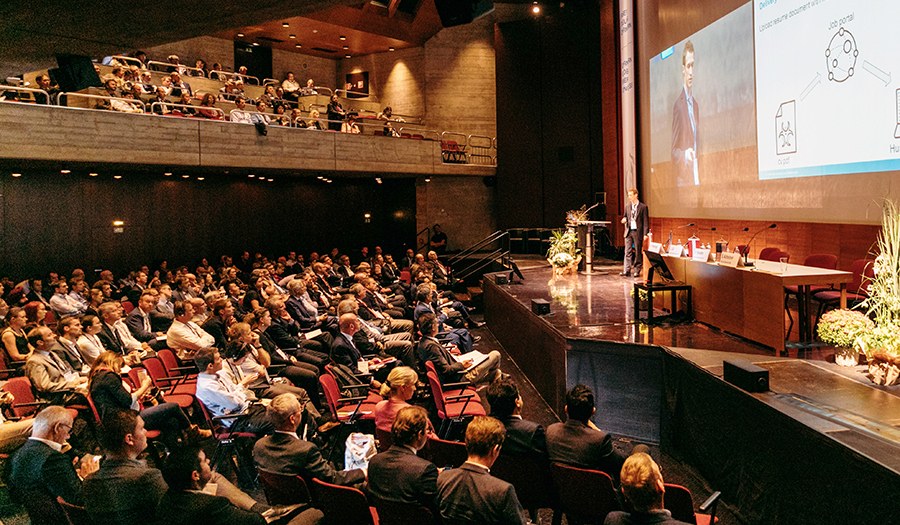
Decathlon visits RadiciGroup to discuss sustainability
Adrian Wilson talks to Friedrich Weninger, managing director of the Austrian Fibres Institute and Dornbirn-GFC.

1st July 2021
Innovation in Textiles
|
Dornbirn, Austria
AW: Before we talk about this year’s exciting Dornbirn-GFC (September 15-17th), I think it might be worthwhile revisiting a little history. This is the 60th Dornbirn Conference and many of our readers may be unaware of why it came to be held in the Austrian town in the first place. Can you elaborate?
FW: To keep it short, foresighted leaders from the industry and the associations realised that there had to be a long-term vision for innovation for Europe’s industry, in what was even then turning into a competitive age. All of the process technology developments in the 1960s were already focused on being more efficient. So they started pulling together all the different players from the industry. There were many manmade fibre (MMF) producers in Europe back then – around 30 in the viscose and cellulosics business alone. Austria was very active in textiles and nobody had any problem with the event being held there. It was somewhat neutral, if you like. So that was the reason it ended up being held in this little town in the western part of Austria and remained there for sixty years – or at least 58, since the last, like this year’s was virtual. Nevertheless they have remained Dornbirn in name. 1961 was also the year of course, when the building of the Berlin Wall commenced, so Dornbirn’s neutrality as a location became even more important and it was able to bring together MMF specialists from both East and West Germany during the period when the country was divided.
Of course textile recycling is complicated when there are complex material composites and multiple-layer products involved, but the important thing is just to make a start
AW: The keynotes you have planned for this year’s opening session on September 15th look to be an expansion of lectures from regular MMF industry leaders, with, for example, Martin Bethke, managing director of the World Wildlife Fund (WWF) addressing delegates. What are you hoping to achieve with the inclusion of an NGO?
FW: The NGOs play a very integral role in the interface from the industry to the consumer. The mission of the WWF is brilliant and it’s good that there is pressure from such NGOs, but we’d like to work more in collaboration with them. Organisations like the WWF can be very supportive in helping the industry achieve goals, especially in respect of the circular economy. I think they can also be very helpful in communicating our goals to both consumers and the authorities.

AW: Similarly, you have key speakers from major packaging organisations, including Huhtamaki and Stora Enso. What can delegates learn from such cross-industry activity?
FW: In terms of size, the packaging industry is bigger than the fibres industry but there are many synergies between the two, for instance on the feedstocks – we are basically using the same raw materials, whether cellulosics or synthetics, and at the end of the day, we will fight for them. There are also a lot of similarities in process technologies, especially on the synthetics side. We face the same issues, so there can be a lot of mutual learning. There’s also an overlap in applications. The fibres and nonwovens industries can learn a lot on the circular economy, where packaging is really advanced in terms of what they are doing, such as the fragmentation of different coloured films for recycling and re-use. Sometimes company approaches can be a bit too linear and our goal this year is to get the R&D guys networking and to later arrange dedicated sessions on cross-industry cooperation.
AW: Circularity. What is the MMF industry doing to develop in this direction? What needs to happen next to see positive progress and how important are industry-wide initiatives?
FW: We are not really moving as fast as is necessary and there is too much of a “wait and see” attitude. In 2025 there will be separate collection of all textile waste in Europe and there’s a lot that can already be done, for example, with mechanical recycling, and perhaps too much emphasis placed on the need for chemical recycling solutions. Of course textile recycling is complicated when there are complex material composites and multiple-layer products involved, but the important thing is just to make a start. We know there is no single solution, but I fear that as long as there are no more incentives and there’s no more pressure from legislation, progress will be slow. Of course, there are always some companies who make a difference, but not in the magnitude we need to create the necessary momentum. Here there are certainly lessons to be learned from the packaging industry, because it was really forced to make positive changes and couldn’t slip away to wait another five years. And consumers are certainly ready to accept change.

AW: Are you encouraged by the response of Scandinavian countries to establish recycling infrastructure, as well as new fibres, in order to deal with textile waste? Do you expect other countries to follow?
FW: It’s superb. A lot of what’s happening is based around cellulosics, due to their abundance in Finland and Sweden, and some traditional industries using cellulosics have greatly diminished. But there is also a good connect in the multi-stake interests between the retailers and brands like H&M, Ikea etc., and the manufacturers, in establishing joint initiatives. These brands are also extremely good at promoting their intentions and what they are achieving, I have to say. Even if they are not 100% solutions, they have already started and that’s what needs to happen elsewhere.
AW: This is the second Dornbirn-GFC to be held online. What have you learned in developing the concept and what will be new in September?
FW: Whether live or online, a good programme is a must, that goes without saying, but arranging an online event is a lot of hard work and people underestimate that. At our first online conference we had a very big audience in terms of numbers – 570 participants – but I felt it was not really representing Dornbirn, where we always have 100 lectures. We obviously can’t do that with a linear platform. This year’s interactive platform will allow us to run two lecture halls simultaneously, and with an exhibition hall and breakout rooms. It’s simple and accessible in terms of navigation. The aim is to trigger interaction and make it easy to connect with other attendees.
AW: Anything you’d like to add?
FW: For the past six years at Dornbirn our focus has been on sustainability and circularity and this remains topic number one for the industry. There is still a lot to be done.

Business intelligence for the fibre, textiles and apparel industries: technologies, innovations, markets, investments, trade policy, sourcing, strategy...
Find out more